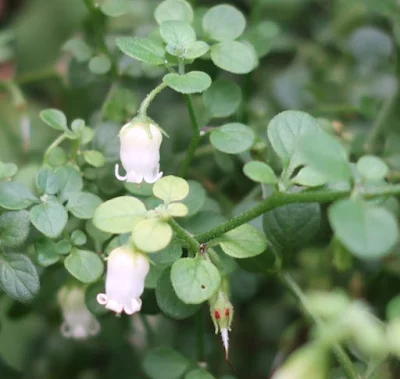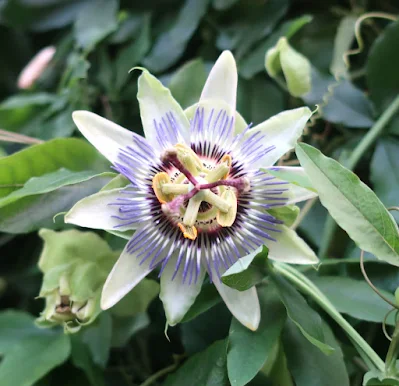英語の後に日本語が続きます。
These are Oxalis corniculata (yellow) or more commonly known as creeping woodsorrel at Yanaka Cemetery in Ueno, Tokyo. The cemetery is large and famous for its beautiful cherry blossoms in spring, but these small roadside flowers in autumn are not bad, are they?
Hi! I'm Kei Narujima. This is a blog about flowers/plants🌼and bugs🐛, and sometimes art and unique Japanese culture that make you smile or think (or so I hope)!! こんにちは。花や虫、そして時々日本の文化などについて書いてます😊。税務英語については https://zeimueigo.blogspot.com/ をご覧ください。
▼
Allium Tuberosum (Garlic Chives) 韮(ニラ)
Japanese follows English. 英語の後に日本語が続きます。
Things change and so do Allium tuberosum or garlic chives. The beautiful white flowers of garlic chives in early September (2nd photo) have died but they're now ready to disperse seeds, which look like black sesame seeds!
Things change and so do Allium tuberosum or garlic chives. The beautiful white flowers of garlic chives in early September (2nd photo) have died but they're now ready to disperse seeds, which look like black sesame seeds!
Amphicarpaea Edgeworthii Var. Japonica (Chinese Hog Peanut) 藪豆(ヤブマメ)
Japanese follows English. 英語の後に日本語が続きます。
These are flowers of Amphicarpaea edgeworthii var. japonica or more commonly known as Chinese hog peanut. The plant is called in Japanese "bush pea" and they were literally in the bush.
These are flowers of Amphicarpaea edgeworthii var. japonica or more commonly known as Chinese hog peanut. The plant is called in Japanese "bush pea" and they were literally in the bush.
The fruits of Chinese hog peanut are edible and I always feel like trying edible weeds but stop short of doing. I have no guts to put them into my mouth...
 |
| Amphicarpaea edgeworthii var. japonica 藪豆 |
 |
| Chinese hog peanut with skunk vine fruits ヤブマメと屁糞葛の実 |
Jamides Celeno (Common Cerulean)?? 小白波紋小灰蝶(コシロウラナミシジミ)??
英語の後に日本語が続きます。
This looks like Jamides celeno or more commonly a common cerulean butterfly, but it can't be. Common ceruleans should be only in Taiwan. But still, this butterfly really resembles the common cerulean...
According to Wikipedia, adult individuals of some butterflies in the Lycaenidae family have hairy antenna-like tails complete with black and white annulated (ringed) appearance and a spot at the base of the tail, and some turn around upon landing to confuse potential predators from recognizing the true head orientation.... It worked. I was confused😅!!
This looks like Jamides celeno or more commonly a common cerulean butterfly, but it can't be. Common ceruleans should be only in Taiwan. But still, this butterfly really resembles the common cerulean...
When I first saw this, I thought it was a piece of paper on a twig, but when approaching it, I started to think it might be a butterfly but was not sure because it has a pair of small black spots on the underside of the hindwings beside each hindwing tail and these black spots (which look like eyes) and the hindwing tails (which look like antennae) made the end of the hindwings look like the head, making me wonder if the butterfly had two heads???
Fruits of Melaleuca Viminalis (Weeping Bottlebrush) ブラシの木の実
Japanese follows English. 英語の後に日本語が続きます。
I thought at first the tree was sick, but these small bumps or galls on the branches are organized for something caused by sickness. They're fruits of Melaleuca viminalis or more commonly known as weeping bottlebrush. If you want to know why the tree is called bottlebrush, read this post. You will see why😆!
I thought at first the tree was sick, but these small bumps or galls on the branches are organized for something caused by sickness. They're fruits of Melaleuca viminalis or more commonly known as weeping bottlebrush. If you want to know why the tree is called bottlebrush, read this post. You will see why😆!
Triadica Sebifera (Chinese Tallow) 南京櫨(ナンキンハゼ)
Japanese follows English. 英語の後に日本語が続きます。
The fruits of triadica sebifera or Chinese tallow have finally started to split!! The bright green at the beginning (4th photo) is beautiful, but their change from the green to black (3rd), preparing to crack, then showing pure white seeds is breathtaking, isn't it! The leaves of Chinese tallow also change color beautifully.
The fruits of triadica sebifera or Chinese tallow have finally started to split!! The bright green at the beginning (4th photo) is beautiful, but their change from the green to black (3rd), preparing to crack, then showing pure white seeds is breathtaking, isn't it! The leaves of Chinese tallow also change color beautifully.
Ilex Rotunda (Kurogane Holly) 黒鉄黐(クロガネモチ)
Japanese follows English. 英語の後に日本語が続きます。
These are fruits of Ilex rotunda or more commonly called the Kurogane holly tree. They've changed the color from green to orange, then to red beautifully since mid September. Autumn is underway...
These are fruits of Ilex rotunda or more commonly called the Kurogane holly tree. They've changed the color from green to orange, then to red beautifully since mid September. Autumn is underway...
Salpichroa Origanifolia (Lily of the Valley Vine) 繁縷酸漿(ハコベホオズキ)
Japanese follows English. 英語の後に日本語が続きます。
The flowers look like white enkianthus, but the leaf shape is different. I googled and found they're flowers of Salpichroa origanifolia or more commonly lilies of the valley vine. The white petals and something red protruding from them are so tiny and adorable, but despite such innocent looking, the plant is hated in Japan for its invasiveness.
The flowers look like white enkianthus, but the leaf shape is different. I googled and found they're flowers of Salpichroa origanifolia or more commonly lilies of the valley vine. The white petals and something red protruding from them are so tiny and adorable, but despite such innocent looking, the plant is hated in Japan for its invasiveness.
 |
| Salpichroa origanifolia 繁縷酸漿 |
 |
| Lilies of the valley vine ハコベホオズキ |
Clematis Terniflora (Sweet Autumn Clematis) 仙人草(センニンソウ)
Japanese follows English. 英語の後に日本語が続きます。
These are flowers of Clematis terniflora or more commonly known as sweet autumn clematis. They're so beautiful (especially when swaying in the breeze) but as other flowers disguising themselves, sweet autumn clematis is toxic to humans and animals and its one of the Japanese names is "horses don't eat (the plant)"😁!
These are flowers of Clematis terniflora or more commonly known as sweet autumn clematis. They're so beautiful (especially when swaying in the breeze) but as other flowers disguising themselves, sweet autumn clematis is toxic to humans and animals and its one of the Japanese names is "horses don't eat (the plant)"😁!
Kyllinga Brevifolia (Kyllinga Weed) 姫莎草(ヒメクグ)
Japanese follows English. 英語の後に日本語が続きます。
These are inflorescences of Kyllinga brevifolia or more commonly kyllinga weed. They're a weed, but because of their tininess (less than 1 cm in diameter) and spiky shape, adorable. I had to squat down to take these photos and that was a good exercise😁.
These are inflorescences of Kyllinga brevifolia or more commonly kyllinga weed. They're a weed, but because of their tininess (less than 1 cm in diameter) and spiky shape, adorable. I had to squat down to take these photos and that was a good exercise😁.
Passiflora Caerulea (Bluecrown Passionflower) 時計草(トケイソウ)
Japanese follows English. 英語の後に日本語が続きます。
Tick tock, tick tock.... It's 10:15:40 a.m... It looks like a clock🕙, isn't it? This is Passiflora caerulea or more commonly bluecrown passionflower. I've wanted to see the flower closely so much for the last couple of years because the plant in my neighborhood has grown up to several meters tall with all the flowers high up a tree😞. Then, I found this bluecrown passionflower, seemingly with no support (last photo), which means that I was able to take close-up shots!! The flower, especially yellow green stamens and purple stigmas, is beautiful both from the above and from the side!!
Tick tock, tick tock.... It's 10:15:40 a.m... It looks like a clock🕙, isn't it? This is Passiflora caerulea or more commonly bluecrown passionflower. I've wanted to see the flower closely so much for the last couple of years because the plant in my neighborhood has grown up to several meters tall with all the flowers high up a tree😞. Then, I found this bluecrown passionflower, seemingly with no support (last photo), which means that I was able to take close-up shots!! The flower, especially yellow green stamens and purple stigmas, is beautiful both from the above and from the side!!
Camellia Japonica (Japanese Camellia) 椿(ツバキ)
Japanese follows English. 英語の後に日本語が続きます。
This is a fruit of Camellia japonica or more commonly known as Japanese camellia. It looks yummy (maybe because of the red color?) but is not edible and used to make oil for skin and hair in Japan.
This is a fruit of Camellia japonica or more commonly known as Japanese camellia. It looks yummy (maybe because of the red color?) but is not edible and used to make oil for skin and hair in Japan.
Platanus × Acerifolia (London Plane) 紅葉葉鈴懸の木(モミジハスズカケノキ)
英語の後に日本語が続きます。
Some plants produce beautiful flowers while others beautiful fruits and leaves. London plane trees are one of the latter. Their fruits are so cute and autumn leaves are beautiful. The London plane (Platanus × acerifolia) is a hybrid of oriental plane and American sycamore. Their beauty is appreciated by not only humans but stink bugs (last photo)😁!
Some plants produce beautiful flowers while others beautiful fruits and leaves. London plane trees are one of the latter. Their fruits are so cute and autumn leaves are beautiful. The London plane (Platanus × acerifolia) is a hybrid of oriental plane and American sycamore. Their beauty is appreciated by not only humans but stink bugs (last photo)😁!
In Japan, the London plane tree is called "maple leaf platanus," which describes exactly the leaf shape.
Luffa Aegyptiaca (Sponge Gourd) 糸瓜(ヘチマ)
Japanese follows English. 英語の後に日本語が続きます。
This is a fruit of Luffa Aegyptiaca or more commonly a sponge gourd. I walk by this almost every day but didn't notice it until today (how silly of me!). It's time to harvest and I saw a gardener watering the flowers nearby. So, I tried to have a chat with him to ask the fate of this gourd, but he was concentrating on watering. (If you're interested in why I had to be worried about the gourd's fate, read this post.)
 |
| Luffa aegyptiaca 糸瓜 |
Tricyrtis Formosana (Toad Lily) 台湾杜鵑草(タイワンホトトギス)
Japanese follows English. 英語の後に日本語が続きます。
These are flowers of tricyrtis formosana. They're more commonly known as Taiwanese toad lilies because of their spots while they're called "lesser cuckoo" in Japan also because of the spots. The spots look like a toad's skin in the west though the chest plumage of this small bird in Japan. Different people, different views.
These are flowers of tricyrtis formosana. They're more commonly known as Taiwanese toad lilies because of their spots while they're called "lesser cuckoo" in Japan also because of the spots. The spots look like a toad's skin in the west though the chest plumage of this small bird in Japan. Different people, different views.
 |
| Toad lily タイワンホトトギス |


















